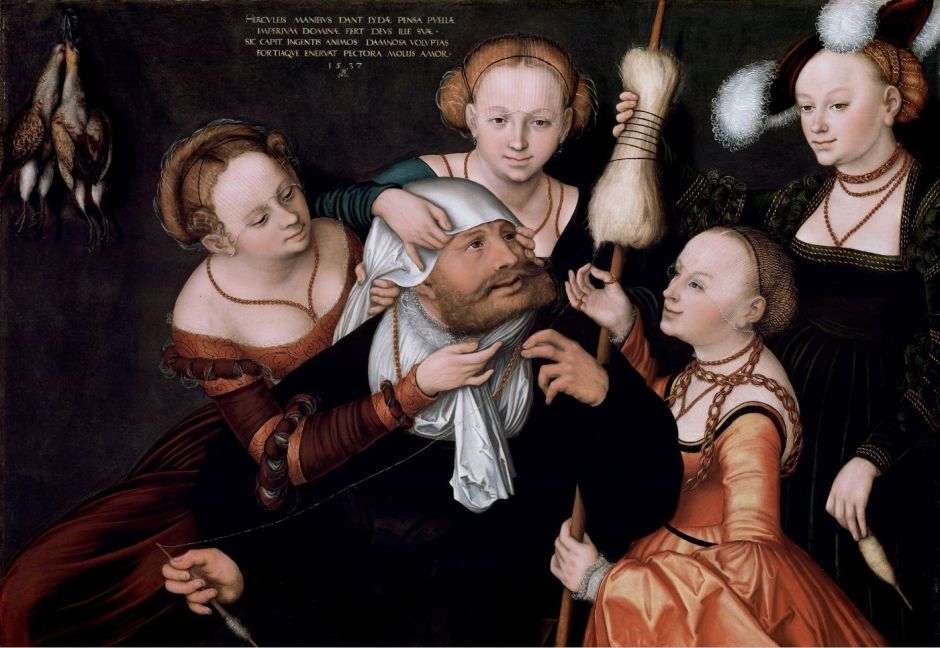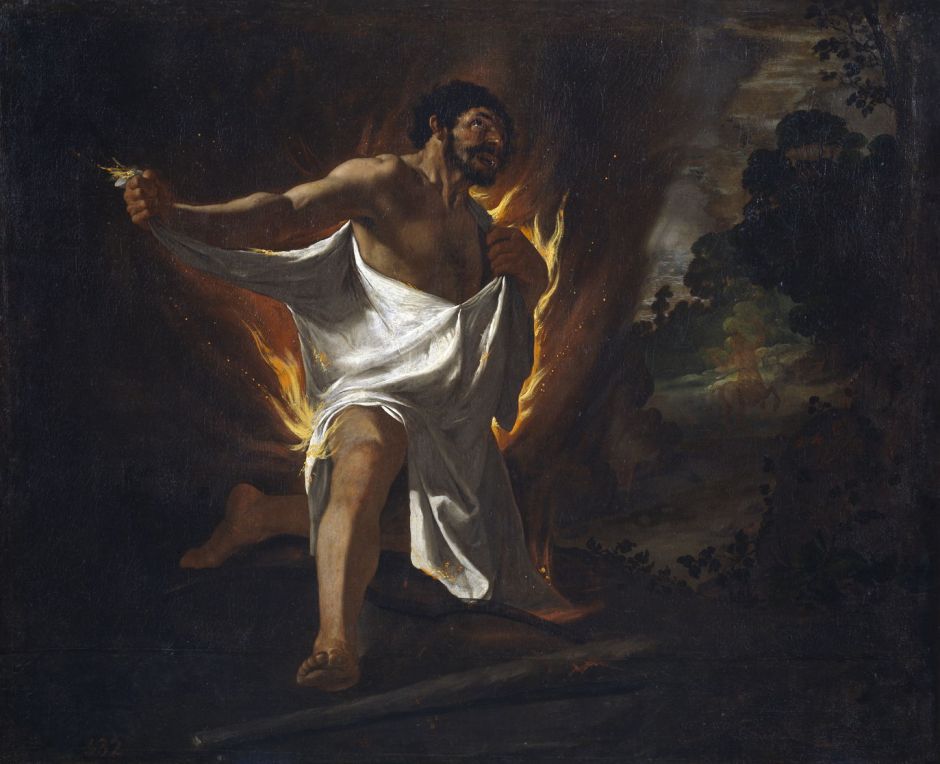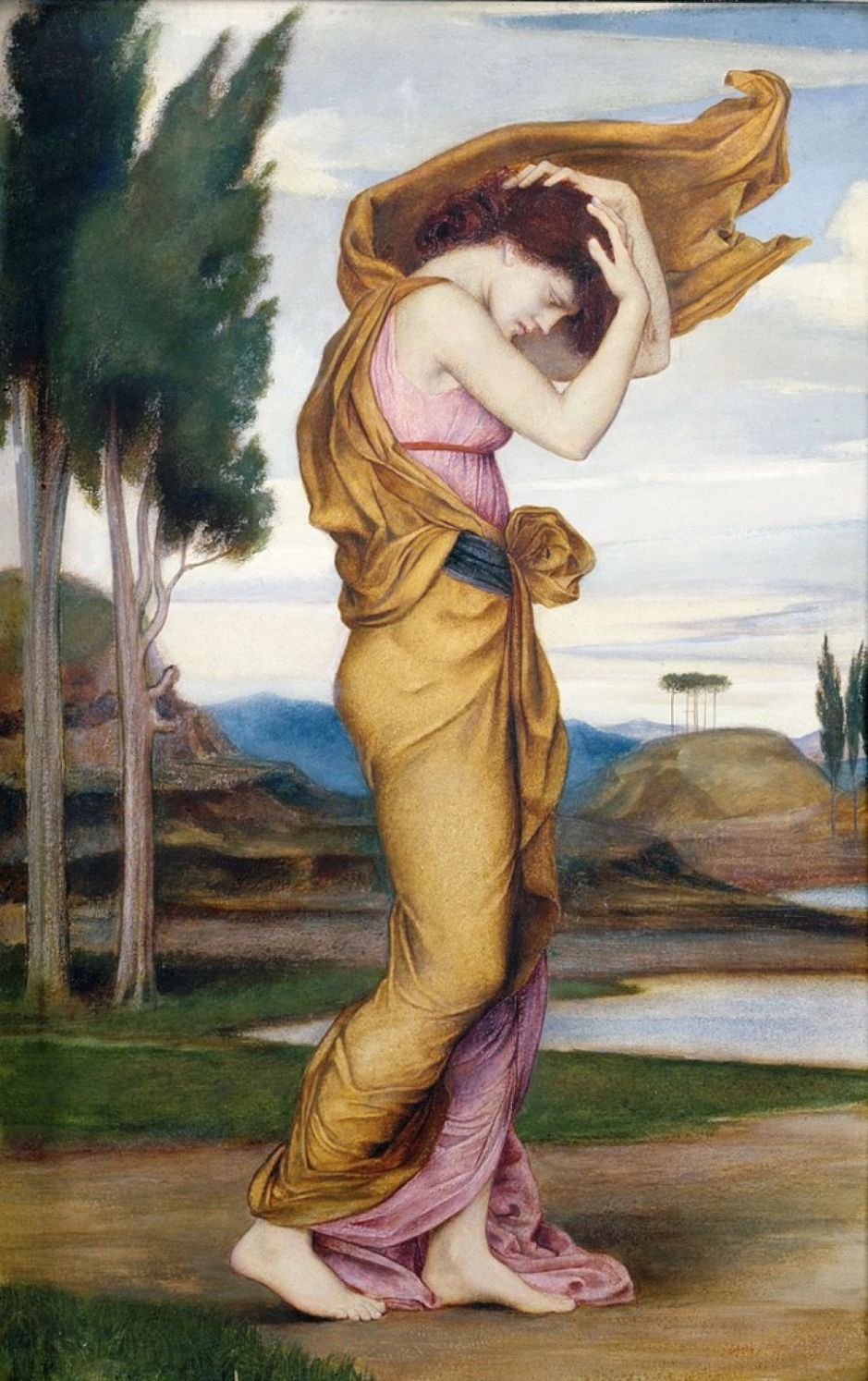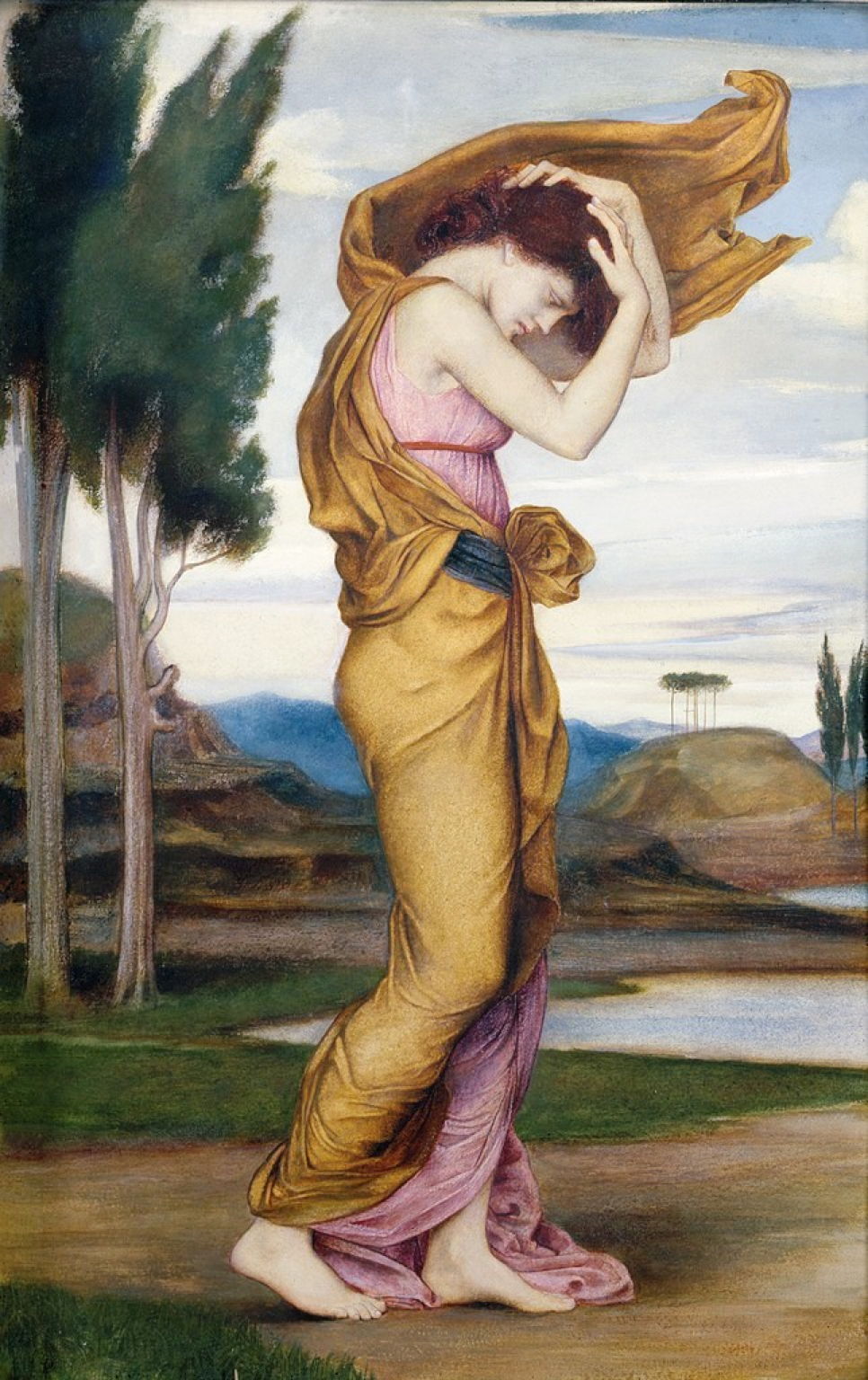Paintings only too easily become separated from their original titles. Devoid of that crucial clue, Evelyn De Morgan‘s full-length portrait of an overtly troubled woman, above, becomes an insoluble mystery.
We see a classically-dressed woman, walking slowly in a non-descript landscape. Both her hands rest on the top of her bowed head, as if she is wrestling with inner turmoil. She stares down at the ground just in front of her feet. The wind has blown loose robe high over the top of her.
Even when we know the title, which is just her name, Deianira, we are little the wiser. The only well-known story involving her is of her attempted abduction by the Centaur Nessus, which I have told in another article. With neither Nessus nor her husband, Hercules/Heracles, shown, the painting is no less cryptic.
Evelyn Pickering, as she was then, studied at the Slade School of Fine Art in University College, London, between 1873-76; the Slade’s first professor was Sir Edward Poynter, who taught there from 1871-75, and painted several unusual if not obscure classical motifs.
Looking at a short and incomplete list of Evelyn De Morgan’s paintings, I can see five which show Ovid’s ‘heroines’, characters for whom he wrote fictional letters in his Heroides:
- Ariadne in Naxos (1877) – letter 10,
- Deianira (1878) – letter 9,
- Hero Holding the Beacon for Leander (1885) – letters 18, 19,
- Medea (1886 or 1889) – letter 12,
- Helen of Troy (1898) – letters 16, 17.
With Poynter her inspiration, Evelyn De Morgan seems to have dipped into Ovid’s unique collection of stories about women.
So why should Deianira appear so troubled?

Considering how frequently Hercules is reported to have had relationships with women and men, his marriage to Deianira seems to have been one of his most enduring. For some artists, it was very physical: Jan Gossaert’s Hercules and Deianira (1517) spares little to the imagination.
Some of Hercules’ relationships were unusual, to say the least. One episode which Ovid’s letter alludes to is a period spent as a slave to Queen Omphale.

As Lucas Cranach the Elder’s bizarre Hercules and Omphale (1537) shows, this paragon of manly attainment – in his twelve labours most notably – was dressed as a woman, and performed womanly tasks such as spinning. I will consider that in detail in the next article.
The attempted abduction by Nessus set a trap which was later to bring about the deaths of both Hercules and Deianira. As he lay dying, Nessus gave Deianira a vial of his blood, advising her that it ‘would ensure that Hercules was true to her forever’. Well-versed readers at the time of Ovid would have recognised this immediately, knowing how toxic the blood of a Centaur is, but Deianira was too naïve to know that, and took the Centaur’s words at face value.

Years later, when she heard that Hercules was having an affair with Iole, Deianira decided to try Nessus’ parting gift on her errant husband. When he called for a tunic (or shirt, or similar), she impregnated the garment with some of the blood, and sent it to Hercules. This is shown in this beautiful miniature accompanying Octavien de Saint-Gelais’ translation of Ovid’s Heroides from about 1510. It is at this stage that Ovid’s fictional letter from her to Hercules starts.
As soon as Hercules donned the impregnated tunic, he suffered intense pain from the poison, and he was unable to remove the garment from his skin. The pain was not so severe as to stop him from murdering Lichas, the herald who brought him the tunic, by throwing him into the sea. But Hercules was unable to find any relief, and resolved to burn himself on his own funeral pyre in desperation.

This is illustrated in another miniature, The Death of Hercules (c 1470), this time for Raoul Le Fèvre’s Histoires de Troyes.

Its most famous depiction, though, is in Francisco de Zurbarán’s powerful The Death of Hercules (1634). Using chiaroscuro as stark as any of Caravaggio’s, Zurbarán shows what can only be a Christian martyrdom, with its victim staring up to heaven, commending his soul to God.
Apart from portraits, Zurbarán painted almost exclusively religious motifs, until King Philip IV of Spain commissioned him to produce a series of paintings showing the life of Hercules. The king was a major patron of the arts, the work of Velázquez in particular, and this series was most probably part of his attempt to impress his royal grandeur with the construction of the Buen Retiro Palace in Madrid from 1631 onwards.
Later Philip became actively involved with religious mystics, and it is possible that his unconventional beliefs may have included Christianisation of some heroic figures like Hercules, but in the way that Botticelli had interwoven classical myth and Christian beliefs.

What happened to Hercules on his pyre has resulted in even more confused imagery, such as Tiepolo’s wonderful The Apotheosis of Hercules (c 1765). Because Hercules was the son of Jupiter/Zeus, as his body was burning, Jupiter decreed that only his mortal ‘half’ would be consumed by fire. His divine part was then conveyed in a chariot in an apotheosis to the gods on Olympus, which has often been portrayed as a saintly ascension. Once there, Hercules reconciled previous quarrels with Juno/Hera, and, as a god in his own right, married Hebe (the Roman Juventas), his half-sister.

The Deianira of Ovid’s Heroides and Evelyn De Morgan’s painting was then left in deep trouble. Hearing the news of Hercules’ death in the midst of writing her letter, she had but one option: suicide. With Hercules a god, and even Iole being cared for by Hercules’ son, Deianira was left alone, to die by her own hand.
But there is more to Ovid’s account, matters which I will take up in the next article.

